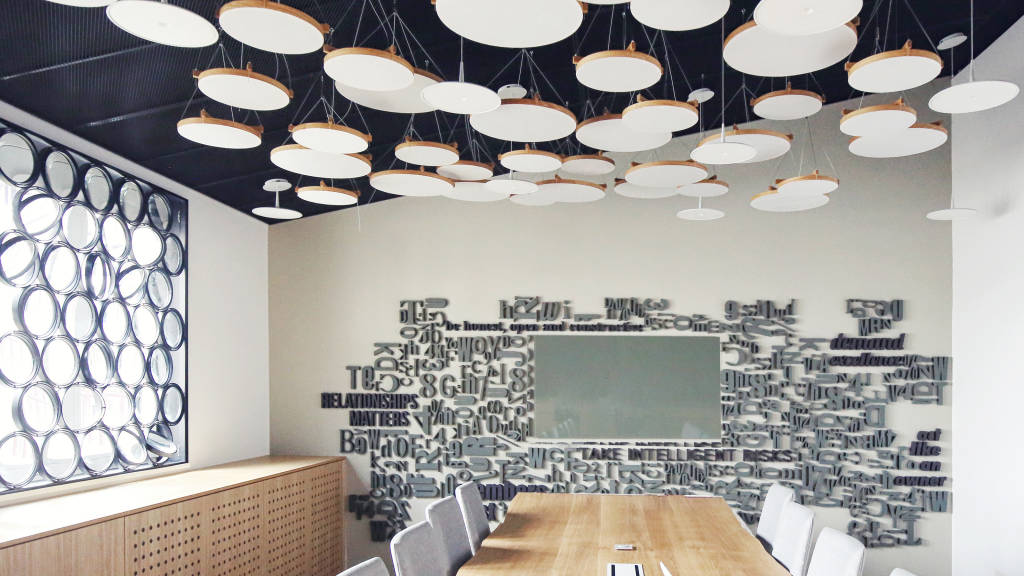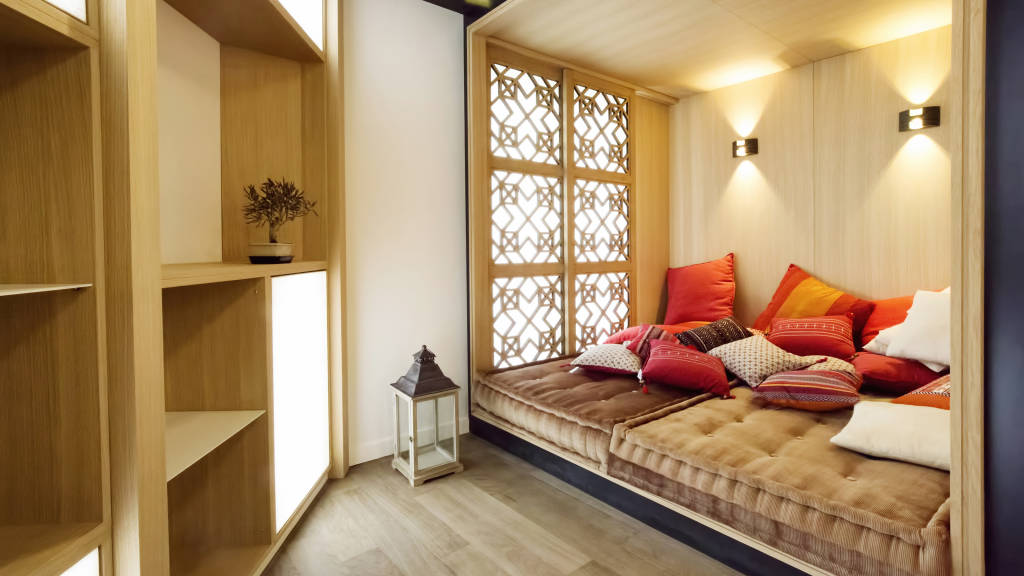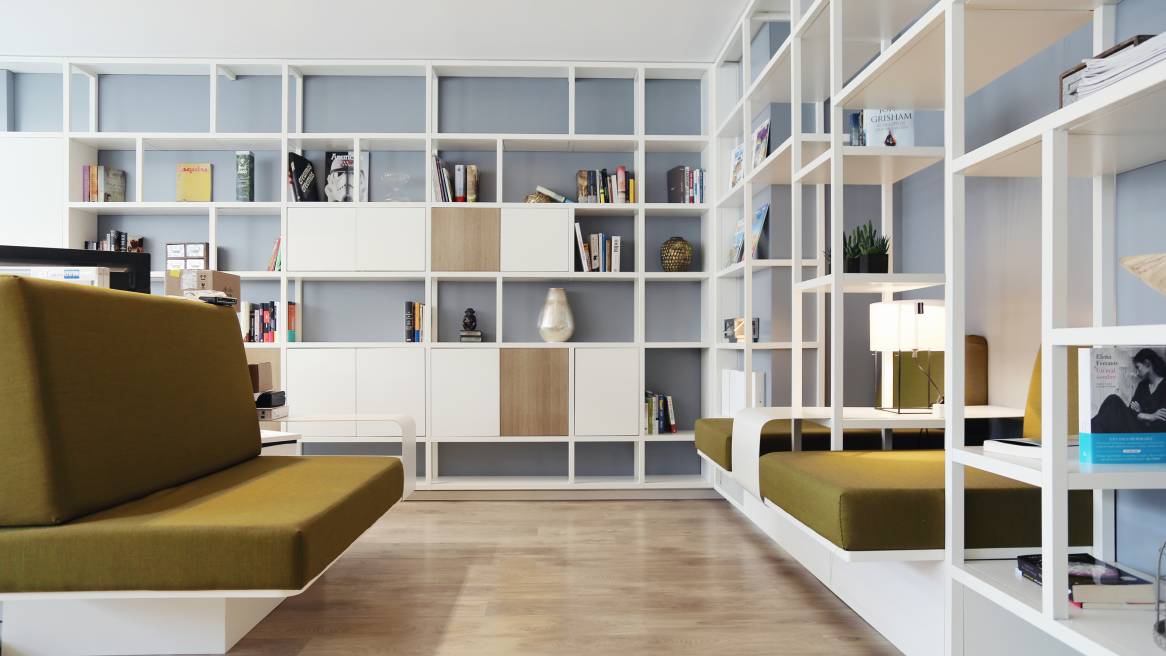Engaging the Five Senses
It turns out workplaces that focus on the intangibles —sight, smell, hearing, taste and touch—are workplaces better equipped to boost employee wellbeing.
It turns out workplaces that focus on the intangibles—sight, smell, hearing, taste and touch—are workplaces better equipped to boost employee wellbeing.
One company is taking a sensory approach to rehumanizing the workplace. Italian firm Il Prisma, a Steelcase distributor, used research to create LinkedIn offices in Milan, Munich, Paris and Madrid that engage the five senses—in order to better engage workers. “Our research proves that sensorial design improves concentration and learning,” says Il Prisma architect Elisabetta Pero. “It’s all about turning on the senses at work, not turning them off.”
Even the best employers, providing the best workplace solutions—ergonomic seating, height-adjustable tables, views to the outdoors, multiple break rooms—may be missing something huge. What about the color of the walls? The smells in the office? The texture of furniture materials? It’s through the five senses—sight, smell, hearing, taste, and touch—that humans perceive the world, notes Pero.
The problem is that while the number of desks in a workplace can be measured, as can the temperature of the work environment, the quantity of incoming light and the noise volume, measuring the impact of the five senses seems impossible.
Il Prisma architects decided that these qualities—long left to aesthetic intuition— could, and should, be quantified. So they undertook a scientific study to measure how the five senses within an office neurologically affect people. In the study, Il Prisma used electroencephalograms ( EEG scans) to measure electrical activity in the brain and an eye tracker device to detect eye movement and the dilation of the cornea. These measurements helped determine what fosters different states in the brain, specifically attention, focus, learning, evocative, simplicity and calm which help people work better. (Definitions of these States of Mind can be found at the end of this article).

The study was conducted in two phases. First, the architects contrasted two sensory-based environments, one called a neutral room, the other a sensorial room. While the neutral room was a basic meeting room with a white conference table and homogenous lighting, the sensorial room had a wooden table and bookcases made of fragrant cedar that were rough in texture, three wooden chairs, each of a different design, a curtain made of leaves, a blue light behind a bookcase and food on the shelves. The subjects were split into two groups, one for each room, and asked to perform a problem-solving test.
In the second phase, subjects were shown pictures of different colors and images, i.e., a photo of blue fabric or of different types of workspaces. This prompted similar neurological responses compared to those that would naturally occur if participants were holding the blue fabric or were physically in those working environments.
While you might expect the sensorial room was best for all types of work, the firm found that engaging multiple senses can also have a negative effect on work—it all depends on what type of work is being done. “The sensorial room might be better for sitting down to write a long memo, but it may not be as ideal for group problem solving,” explains Pero.
Participants in the sensorial room performed well on the individual listening task. “While the subjects were memorizing, learning and studying, they were able to remember more words, reproduce more words and their concentration levels were heightened compared to those in the neutral room,” Pero says. Other findings include the discovery that the colors blue and green and the use of wood and natural materials promoted calm and relaxed brain states.
The goal for the study was more than to create rules for how to design ideal workplaces. Il Prisma was also interested in using the scientific measurement to create humanistic design. “We weren’t trying to arrive at a set amount of data or a number that gave the exact formula for designing sensorial spaces,” Pero says, “but a method that could be used to help people personalize settings necessary for the tasks carried out and for the specific people that work within that space.”
Embracing the Senses at LinkedIn
At the Milan LinkedIn office, with an umbrella theme of transformation, the company used different rooms to represent five typical locations in Italy: a theater, a restaurant, a tailor’s shop, a cellar and a garden. LinkedIn referenced the Il Prisma results, which the architects call “emotional grammar,” to design each room to best suit the tasks that would be done in them.

For example, in the Cellar, workers can drink a glass of wine while listening to music and cedar wood is present. The room is ideal for highly private meetings or intense moments of concentration. Whereas in the Tailor’s Shop, sensorial elements are muted so that problem-solving meetings can be held. There are large swaths of materials such as fabric and metal, but no color or texture that attracts undue attention. The variety of the five rooms offers an ecosystem of spaces in the office, so workers can match their current work needs with the space that will best support them.
Ultimately, the Il Prisma research reports that, “The contemporary worker prefers places that are no longer antiseptic and standardized, but customized and with strong connotations.”
The takeaway for all firms is that the senses should be taken into account so workers can choose the environment that best suits their needs.
Il Prisma has published the full study in a book entitled “Now We Work.” The book has also been adopted as an academic textbook in European universities.
States of Mind
- Attention: Receptive to incoming external stimulation.
- Focus: Able to concentrate on the details of what you’re interacting with or on the activity at hand.
- Learning: Able to recall memories to help classify the information acquired. If the attention state is also activated, this indicates that you do not already have classified knowledge about the information and perceive the stimulus as “something new.”
- Evocative: Able to link and compare the stimulus with your previous experiences.
- Simplicity: Can easily comprehend what the stimulus communicates. If this neurometric is not active, you are in a situation of cognitive fatigue.
- Calm: A state of relaxation where you are willing to interact effectively with the environment. If turned off, it generates a state of inhibition, hampering the decision-making process.


